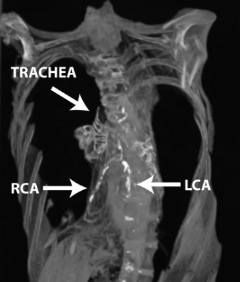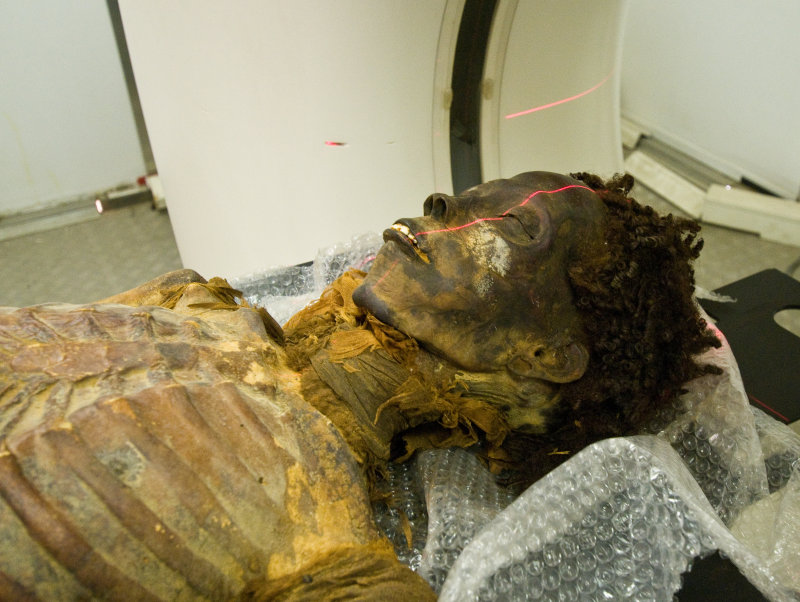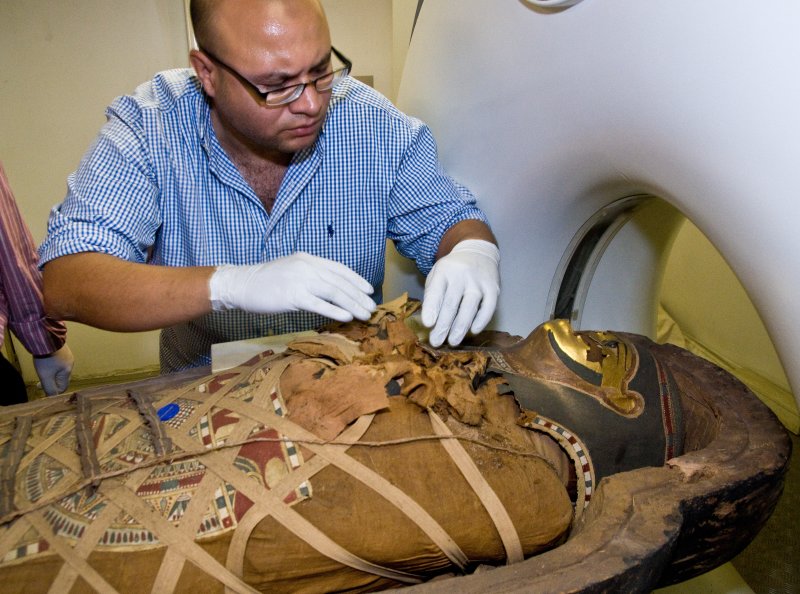May 18th, 2011
The Curse of the Mummy: Coronary Artery Disease?
Larry Husten, PHD
Could the real curse of the mummy be coronary artery disease? Despite strict adherence to the original Mediterranean diet and a complete lack of tobacco, trans fats, and refined sugars, an Egyptian princess who died around 1550 BC is the first person in history to receive a diagnosis of coronary artery disease.
A CT scan of the princess was presented yesterday at the International Conference of Non-Invasive Cardiovascular Imaging in Amsterdam. The princess, who had blockages in her left and right coronary arteries, was one of 52 Egyptian mummies included in the study. Twenty of the mummies had definite signs of atherosclerosis, but only 3 had evidence of coronary narrowing.
“Overall, it was striking how much atherosclerosis we found,” said Dr. Gregory Thomas, a co-principal investigator of the study, in an ESC press release. “We think of atherosclerosis as a disease of modern lifestyle, but it’s clear that it also existed 3500 years ago. Our findings certainly call into question the perception of atherosclerosis as a modern disease.”
(Photographs reprinted courtesy of Michael Miyamoto, MD)




Why is this surprising? People have dropped dead thru out history. It is too bad that there is no way to measure her lipids. Also, her diet may have been a lot richer than the so called common folks of that era.
Competing interests pertaining specifically to this post, comment, or both:
none
Atherosclerosis is a corelate of the normal ageing process. We did not have the modern means to identify it earlier, nor were studies on risk factors done during the above period. With the presence of risk factors, we only accelerate the process.
Competing interests pertaining specifically to this post, comment, or both:
none
The asset that the diet of that woman was probably richer than that of her contemporaries sounds wise, but in such kind of things, the right choice is speaking only about evidences, and the affirmation connects to a social system criticising out of tghe scope of medicine, and obviously out of our times. It seems that the main component of the average egyptian’s diet was simply beer, that was made with a recipe that produced some kind o a thick soup, rich in proteins, vitamins and minerals coming from yeast growth. The egyptians got a punishment high enough when their first offspring, men and beasts, were killed to force the release of their captured people of Moshe. Let’s them rest in peace, and don’t forget that Abraham had slaves.
Competing interests pertaining specifically to this post, comment, or both:
None
A fascinating study. Will we likely see scan results for additional mummies? To what journals are these going to be submitted? I agree with an earlier comment that there has no doubt been atherosclerosis throughout history, but to actually see it in a mummy is nevertheless interesting. If applied to enough mummies, this approach might eventually give us a better idea of the extent of CV damage and risk in history, as compared with the current risks. Keep up the good work!
Dr. Smith– good timing for your question! I’ve learned that there will be a report on a significantly expanded investigation of mummies that will be presented in a little more than a week at the ACC meeting in San Francisco. Curses aside, I am looking forward to cover this one for the news.
Atherosclerosis started with grain agriculture. Hunter-gatherer societies are free from atherosclerosis. Until they get “civilized” of course. Connect the dots. Someone. Please.
I agree (again) with Dr Vasin. Kitivan islanders are free from atherosclerosis, and the data suggests this is true regardless of age. I therefore have to disagree with the comment that “atherosclerosis is a normal correlate of the aging process”. With the advent of a grain-based society, you are bound to get atheroma. That is why virtually all hunter-gatherer societies have such low rates of stroke, coronary disease, diabetes mellitus, hypertension, malignancy and dementia – they don’t ingest a civilizational diet rich in CHO.
Nobody thinks that this mummy could have had Familial Hypercholesterolemia (FH)??? in that case, the food doesn’t count in her CV risk…